In the past, women wore tight corsets that restricted them, much like the strict societal norms they faced. This led to a movement that changed women’s clothing and sparked a strong push for women’s rights.
We’ll focus on two key figures from the 19th century: Elizabeth Smith Miller and Amelia Bloomer. They promoted a new style of clothing for women. An image of Mrs. Portia Lucretia Green in the Bloomer Costume symbolized women’s freedom and equality.
This movement was like a call to action for young women, encouraging them to pursue their dreams without being held back by old-fashioned long dresses and tight corsets.
To learn more about this interesting change in women’s fashion, keep reading. It’s a story of resilience and revolution that starts with the beginnings of this new style.
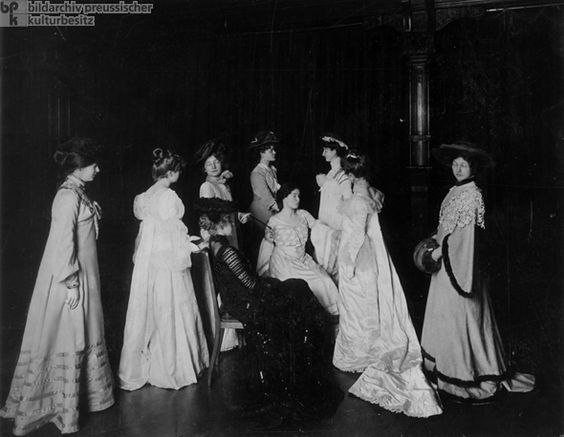
Credits: @susanheep / Pinterest
Key Takeaway
- The Dress Reform Movement in the 19th century challenged restrictive fashion norms and promoted practical, comfortable clothing for women.
- The Bloomer Costume, featuring a short skirt and trousers, became a symbol of women’s empowerment and freedom.
- The movement was closely tied to the fight for women’s rights, using fashion to challenge gender roles and societal expectations.
- Dress reform had a significant impact on women’s lives, promoting inclusivity and self-expression and prioritizing health and comfort.
Origins of Reform Dress
With society changing around them, the story of women’s clothing reform shows how people fought hard for equality and freedom.
Central to this are the brave women who had a bold vision and forever changed how women dressed.
The Contributions of Elizabeth Smith Miller
Let’s start with Elizabeth Smith Miller, who was born in 1822. She was a big deal in the movement to change how women dressed and fought for women’s rights.
One of her most astounding ideas was the Bloomer costume. It had pants like those worn in Turkey that went down to the ankle and a skirt that reached the knees. This new outfit was a game-changer, giving women more comfort and the ability to move freely.
As a result, it shook up how people thought about how women should dress back then.
Amelia Bloomer and the Bloomer Costume
Meet Amelia Jenks Bloomer, a trailblazer in the fight for women’s rights who made waves with her groundbreaking contributions to dress reform.
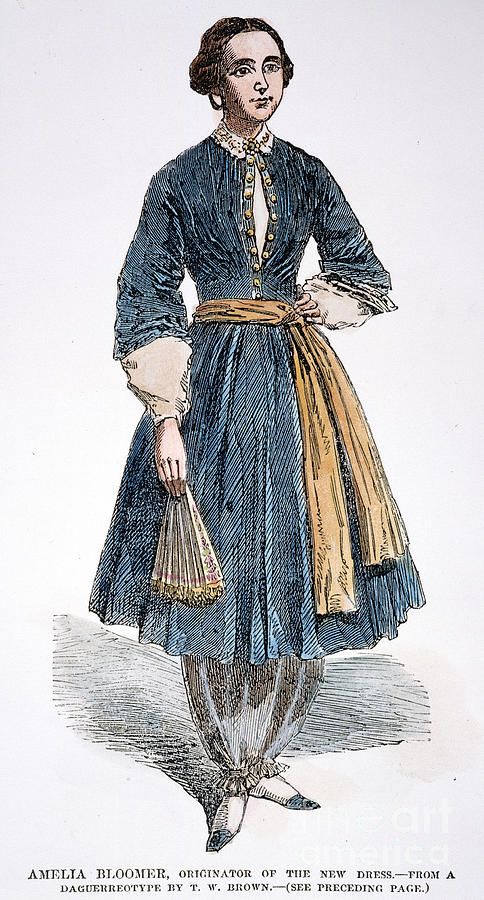
Credits: @timetravels /Pinterest
Elizabeth Smith Miller might have designed the Bloomer costume, but Amelia Bloomer took it to the next level. She spread the word far and wide through her platform in The Lily, making the outfit all the rage.
So, what exactly was the Bloomer costume? It was a knee-length skirt paired with Turkish-style pantaloons—practical, comfortable, and a stark departure from the restrictive clothing women were used to.
Of course, breaking the mold comes with its fair share of challenges. The Bloomer costume faced ridicule and criticism from skeptics but also sparked essential conversations.
Bloomer’s relentless efforts made it more than just a fashion statement—a symbol of defiance and empowerment.
By challenging traditional norms, Bloomer empowered women to take control of their clothing choices. This benefited us because it paved the way for greater freedom and comfort for future generations.
Elizabeth Cady Stanton and the Seneca Falls Convention
Elizabeth Cady Stanton was a significant figure in the fight for women’s rights. In 1848, she helped organize the Seneca Falls Convention, the first in the United States.
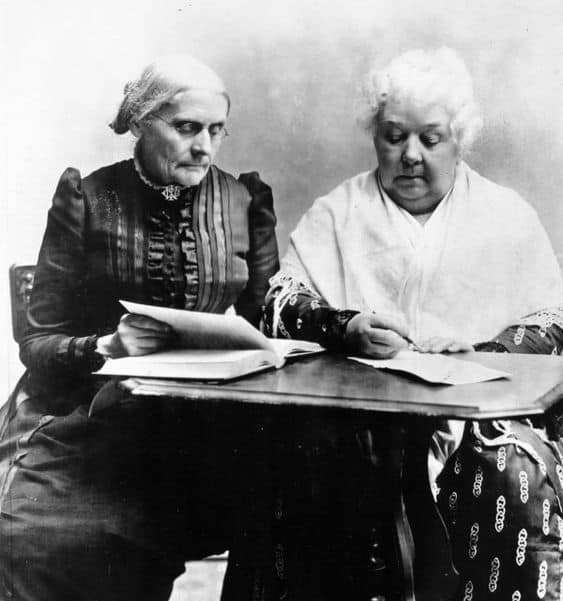
Credits: @timemagazine /Pinterest
At this meeting, they discussed the right to vote and the need for women to have the same rights as men.
Stanton wrote the Declaration of Sentiments, inspired by the Declaration of Independence. It said that men and women should be treated equally and have rights like owning property and getting an education.
Moreover, this document was approved on July 20, 1848, marking a big step forward for women’s rights. The convention and the Declaration remained a significant landmark in the history of women’s empowerment.
Context of Dress Reform in the 19th Century
In the 1800s, changing how people dressed wasn’t just about fashion – it was a big deal for many reasons.
Back then, everyone had their take on what needed fixing in the clothing world. Doctors, health buffs, folks living in special communities, women fighting for their rights, and members of social clubs all joined forces.
Their goal? To convince everyone, especially women, to say goodbye to tight, uncomfortable clothes like a tight corset and hello to outfits that let them move and breathe better.
As time went on, the focus of women’s dress changes shifted. At first, the idea was to shake things up – shorter skirts, pants for women – you name it! But after about 1870, the movement started to look a bit different.
Instead of pushing for totally new styles, people started to blend the old with the new. By the 1900s, dress changes became more about fitting in with what was already famous, reflecting how society was changing.
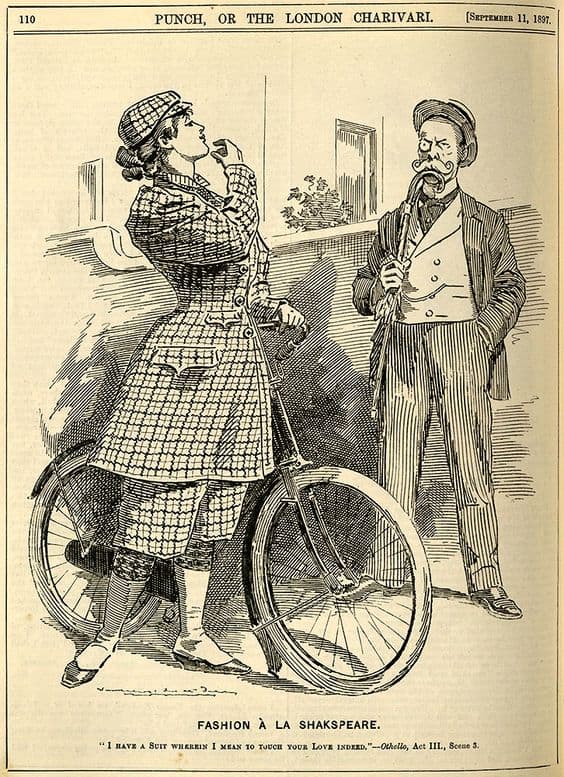
Credits: @csunorthridge/Pinterest
The changes in clothing were about more than just about looking good. They had a real impact on society: they encouraged women to get more involved in staying healthy and active, like riding bikes or playing sports.
They also made folks question what it meant to be beautiful or healthy. And for women, having comfy and practical clothes wasn’t just about feeling good—it was about expressing themselves and standing up for their beliefs.
Ultimately, these changes in how people dressed weren’t just about clothes. They were about challenging the way things had always been, making sure everyone could feel good, and opening doors for more equality—both in fashion and life.
The Bloomer Costume: A Symbol of Change
The Bloomer Costume was revolutionary in fashion history in the 19th century. It was a fashionable dress that sparked and began a wave of change in women’s attire. In this chapter, we’ll discuss how women’s garment impacted the younger ones.
Exploring the Bloomer Dress and Its Significance
In the 1850s, the Bloomer dress was formerly known as the Bloomer costume within the women’s fashion reform movement. Crafted to grant women newfound freedom and comfort, it boldly challenged the constricting fashion norms of its era.
And this is what it looked like—a short skirt paired with a jacket, complemented by Turkish-style trousers gathered at the waist and ankles.
Amelia Jenks Bloomer championed this attire as a symbol of women’s emancipation from traditional gender roles. Initially dubbed with a derogatory tone, the name “bloomer” didn’t deter its wearers, who also referred to it as the “Reform Costume” or the “American Dress.”
Beyond mere fashion, the Bloomer costume became a cornerstone of the women’s rights movement. It signified a bold departure from the confining corsets and trailing skirts that curtailed women’s activities and mobility.
Its influence even stretched to the 1890s cycling craze, as women embraced knickerbockers to symbolize their newfound passion for bicycles.
Despite ridicule and controversy, the Bloomer costume left an indelible mark on fashion and women’s rights. It heralded a new era of practical and comfortable clothing choices for women.
Through its legacy, the knee-length dress worn in the 19th century stands as a testament to the enduring spirit of feminist empowerment.
Impact of Bloomers on Young Women
The influence of bloomers extended beyond the realm of fashion, profoundly impacting the lives of young women.
Because of the revolutionary garment, women found themselves engaging in activities previously deemed unsuitable for their gender. They’re now free to bike, horseback ride, and do other outdoor activities.
As Elizabeth Cady Stanton, a prominent figure in the women’s movement, famously remarked, “The bloomer costume is a protest against the oppression and disfranchisement of woman.”
In conclusion, the bloomers stand as a testament to the power of fashion to drive social change.
Dress Reform Movement and Women’s Rights
The Dress Reform Movement sought to revolutionize women’s clothing. It advocated for practicality over pretense—no more cumbersome corsets and restrictive layers, and in came garments designed to liberate the body.
Bloomers became more than just pants; they were a statement of autonomy, a declaration that women deserved comfort without compromise.
Moreover, it wasn’t just about fabric but more about freedom. It catalyzed change, sparking conversations about our rights that echoed far beyond the seams of a dress.
Women dressed differently and simultaneously challenged the gender roles entrenched in society. They demanded to be seen as more than delicate adornments. They were pioneers, stitching together the fabric of a future where equality wasn’t just a dream but a reality.
Intersection of Fashion and Gender Roles
Fashion and gender roles were tightly woven like threads in a fabric. Society had strict rules about attire: dresses for girls symbolized grace, while pants for boys signaled strength.
Yet, some questioned these norms.
They sought comfort and style over conformity, challenging gender expectations by donning unconventional attire. This rebellion prompted a rethink on gender definitions, proving that clothes are more than mere garments—they’re identity statements.
Through fashion, individuals stitched a narrative of self-expression. And the result? It unraveled the complexities of societal expectations and paved the path for inclusivity and authenticity.
Beyond Fashion: The Social Impact and Women’s Health
Fashion isn’t merely about looking good; it reflects our beliefs and values.
Like the Bloomers, it showed how we embrace new styles and clothing choices beyond following trends. In short, it made women’s garments a profound self-expression with far-reaching social implications and health essentials.
When we break free from conventional fashion norms, we challenge entrenched societal expectations and redefine belonging.
By embracing diverse fashion choices, we dismantle rigid stereotypes and foster inclusivity. It’s not just about the clothes but the messages we convey—acceptance, empowerment, and authenticity.
Through fashion, we cultivate a society where everyone feels seen, heard, and celebrated for their unique identity and style.
Moreover, as styles evolved, especially in the 19th century, so did the impact on women’s well-being.
Tight corsets and heavy skirts were once fashionable staples. However, they harm physical health by compressing organs and restricting movement.
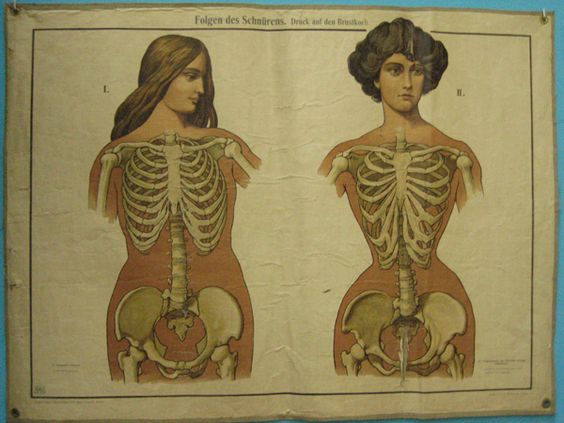
Credits: @missymrrs /Pinterest
This is where the Bloomer garment comes in. It’s a beacon of change advocating practicality over fashion, promoting garments that prioritize women’s health while remaining appealing.
As a result, this movement liberated women from constrictive attire and sparked a broader conversation about self-care and bodily autonomy. Through the lens of fashion, women reclaimed their health and paved the way for a more comfortable, empowered future.
Conclusion
In reflecting on the journey of Dress Reform, we honor the courage of trailblazers who dared to challenge the norms of their time. From Amelia’s bloomers to Elizabeth’s advocacy, their bravery gave us the freedom to dress how we want.
As we look ahead, let’s not forget their legacy that extends far beyond the seams of clothing—it is a testament to the enduring spirit of resilience and determination.
Let us continue championing movements that push boundaries and strive for a future where fashion and equality intersect, leading us toward a more inclusive tomorrow.
